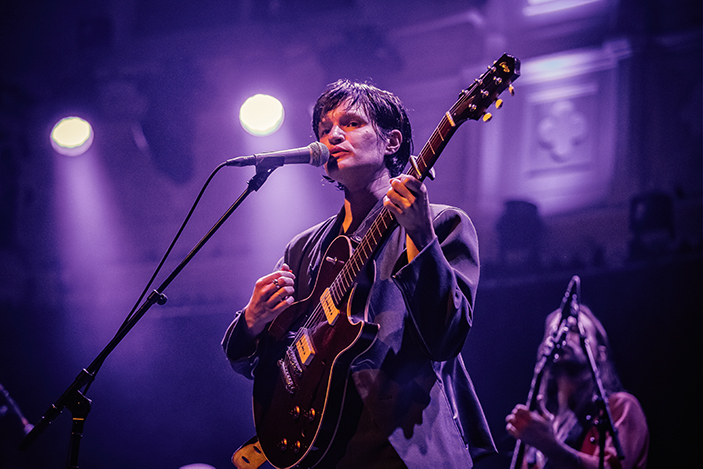How to Connect In Ear Monitors to Mixer Like a Pro?
Are you a professional photographer looking to elevate your audio experience during shoots? Understanding how to connect in ear monitors to mixer is essential for achieving high-quality sound. In this article, we will dive deep into the world of in ear monitors and mixers, providing you with detailed insights and steps to make the connection seamless.
Whether you're capturing a lively event or a calm photo session, having the right audio setup can significantly enhance your workflow. Let's get started!

Understanding In Ear Monitors
Before we delve into the connectivity process, it's essential to understand what in ear monitors are and their importance in professional settings.
In ear monitors (IEMs) are personal monitoring devices used primarily in live performances and recording situations. They allow musicians and professionals to hear themselves as well as mix levels, ensuring clarity and precision in their audio feedback. Photographers can also greatly benefit from in ear monitors, especially when collaborating with other professionals in complex environments.
The Benefits of Using In Ear Monitors
1. **Improved Sound Quality**: With the right in ear monitors, you can hear nuances in sound that might be missed with standard speakers.
2. **Reduced Background Noise**: IEMs provide noise isolation, allowing you to focus entirely on the sound you want to hear without distractions.
3. **Customization**: Many systems allow for sound customization, which means you can tailor your audio experience to fit your needs.

Choosing the Right Mixer
Connecting in ear monitors to a mixer requires a compatible mixing console. A good mixer will provide the necessary mixes and outputs for your in ear monitors. Here are some factors to consider:
1. **Number of Outputs**: Ensure that the mixer has enough outputs to accommodate all users. For professional setups, look for mixers with multiple auxiliary sends.
2. **Quality of Pre-Amps**: High-quality preamps will affect the clarity and quality of sound sent to the in ear monitors.
Required Equipment
Before we dive into the setup, make sure you have the following equipment ready:
- In Ear Monitors
- Mixer
- TRS or XLR cables
- Audio interface (optional)

How to Connect In Ear Monitors to Mixer
Now that we have everything we need, lets get into the connection process. The steps below will guide you through how to connect in ear monitors to mixer:
Step 1: Identify the Mixer Outputs
Locate the monitor mix outputs on your mixer. Most mixers will have separate outputs for monitors, typically labeled as Aux or Monitor.
Step 2: Use TRS or XLR Cables
Depending on your mixer's output type and the in ear monitors you are using, connect the appropriate cables. TRS cables are generally used for line level signals, while XLR cables are common for balanced outputs.
Step 3: Connect to the In Ear Monitors
Connect the other end of the cable to your in ear monitors. Ensure the connections are snug and secure.
Step 4: Adjust Settings
Once connected, its time to configure your mixer's settings. Adjust the monitor levels accordingly, ensuring that its neither too loud nor too soft for your needs.

Troubleshooting Common Issues
Even with the best equipment, issues can arise when connecting in ear monitors to a mixer. Here are some common problems and solutions:
1. No Sound from In Ear Monitors
Check all connections and ensure that the mixer is sending a signal to the output you selected. Make sure the volume is turned up on both the mixer and the in ear monitors.
2. Distorted Sound
Distortion could be caused by a level that is too high. Lower the output from the mixer and adjust the gain stage to ensure clean sound.
3. Static or Interference
Ensure that cables are securely connected and are not damaged. Using shielded cables can also help reduce interference.
Conclusion
Mastering how to connect in ear monitors to mixer is a valuable skill for any professional photographer looking to enhance their audio experience. Following the steps and guidance in this article will ensure you're prepared for any audio needs during your photography sessions.
For more information on in ear monitors and their usage in various scenarios, check out How to Use IEMs, What IEMs Are For, and Why Use IEM Systems.
FAQ
1. Can in ear monitors be used with any mixer?
In ear monitors can be used with most mixers as long as the appropriate outputs are available, typically Aux or monitor outputs.
2. How do I know if my in ear monitors are compatible with my mixer?
Check the specifications on both the in ear monitors and mixer. Ensure the connectors (TRS/XLR) and outputs align.
3. What are the best in ear monitors for live performance?
The best in ear monitors vary by preference and application, but some popular options include Shure SE215, Westone W30, and Audio-Technica ATH-E70.
As an Amazon Associate, I earn from qualifying purchases.

